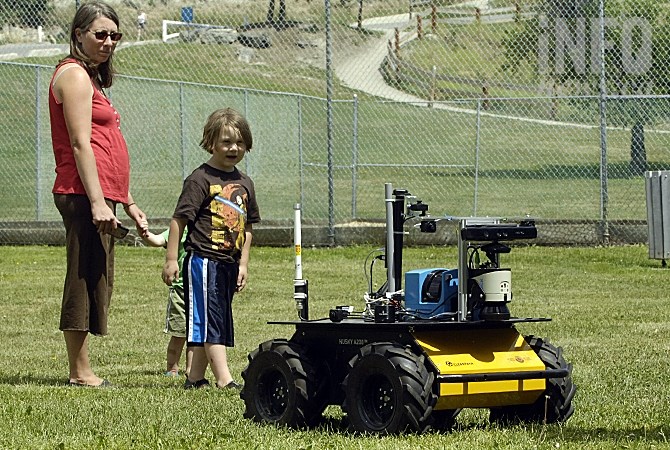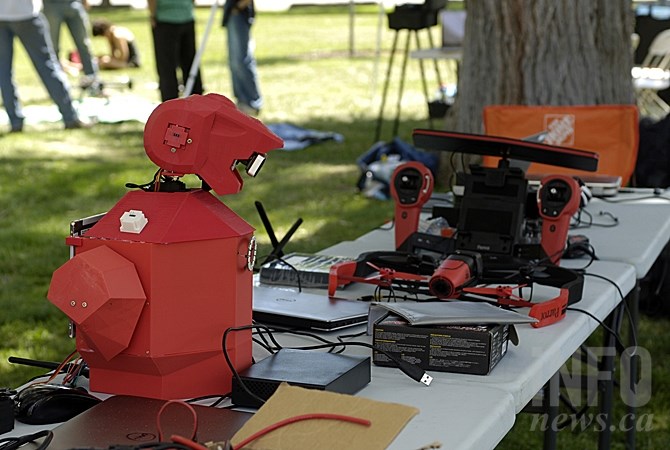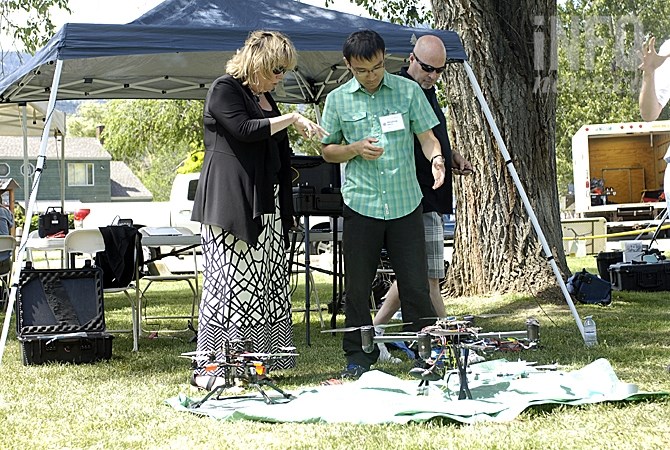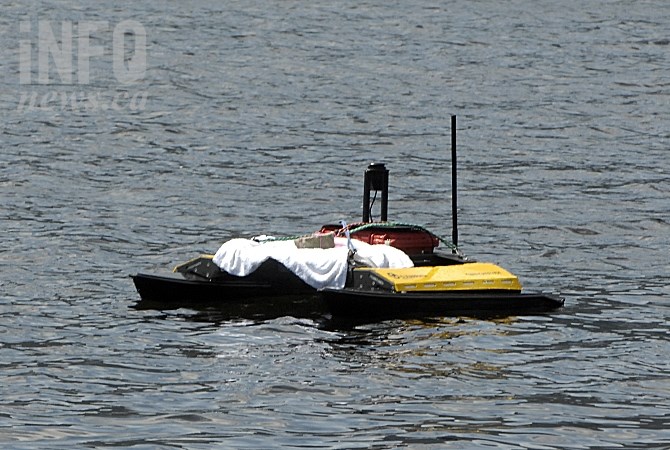
Teams of students from across Canada were in Kelowna this week testing out and demonstrating robots for a wide range of applications.
(ADAM PROSKIW / iNFOnews.ca)
June 20, 2015 - 9:31 AM
KELOWNA – Graduate students from across Canada were in the Okanagan this week, testing out and demonstrating the latest in robotic technology.
Teams from schools across Canada spent the week in Kelowna programming and testing their machines at an annual event meant to bring together engineers and operators normally scattered across the country.
The annual meeting started in 2012 and this is the first time it was held in Western Canada, according to NSERC Canadian Field Robotics Network manager Isabelle Lacroix.
“By providing the first national structure in field robotics, the NCFRN will foster collaborations between academic, industrial and government researchers in Canada, and act as a catalyst for technology and knowledge transfer opportunities as well as for commercialization of developed technologies,” she says.
The demonstration took place at the base of Knox Mountain in the heart of Kelowna all this week, and included robots designed to work in the air, on land and in the water.

(ADAM PROSKIW / iNFOnews.ca)
Richard Vaughan, a professor of computer science at Simon Fraser University, says the field testing is vital to the ultimate success of the robots, most of which will be used in unpredictable weather and terrain.
“This week we’ve been doing some mapping on the trails (at Knox Mountain Park),” he says. “Just like Google is mapping the roads with their cars we are mapping the trails with laser scanners and cameras so we can learn how to build high quality models of natural terrain under fairly tough conditions.”
To accomplish this, Vaughan is using a Husky Robot, a four-wheeled platform covered with high tech equipment that can move about independent of an operator.
“It knows if it’s looking at a person because it can see two legs,” he says. “It also knows the difference between someone who is looking to engage with it and someone who isn’t.”
The Husky Robot is also designed to communicate with a quad-copter aerial robot to find someone who may be lost in the wilderness.
“If the aerial robot sees someone who is waving their arms it will descend and send an estimate of their GPS location by radio to the Husky, which can avoid the trees and other obstacles and go the location and find the person who looks the most like it wants to interact with it.”

(ADAM PROSKIW / iNFOnews.ca)
Malika Meghjani is a Ph.D student from McGill University. She says she has been interested in robots since she was a little girl. She is part of the team testing out an aquatic robot that can map and find targets underwater.
“There are several practical applications like finding lost divers or black boxes,” she says.
Lacroix says the technologies developed by the NCFRN will help address a wide range of Canadian economic, environmental and political issues spanning border patrol, spatial exploration, navigation safety and senior care.
For more information, visit the Natural Sciences and Engineering Research Council of Canada website.

(ADAM PROSKIW / iNFOnews.ca)
To contact the reporter for this story, email Adam Proskiw at aproskiw@infonews.ca or call 250-718-0428. To contact the editor, email mjones@infonews.ca or call 250-718-2724.
News from © iNFOnews, 2015